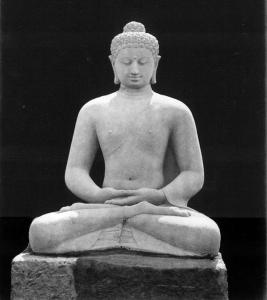 We are reminded every day of the many things that are outside of our control. In the face of these events it can be difficult to cope, especially when faced with the reality that there is little, if anything, we can do to change these occurrences. To borrow a page from Buddhism, one of the biggest proponents in the history of meditation, what we do have the power to do however, is to take responsibility for our state of mind, and to change it for the better through meditation. According to Buddhism this is the single most important thing we can do and in doing so we provide the only “real antidote to our personal sorrows, and to the anxieties, fears, hatreds, and general confusions that beset the human condition.” (“What is Meditation? | The Buddhist Centre”)
We are reminded every day of the many things that are outside of our control. In the face of these events it can be difficult to cope, especially when faced with the reality that there is little, if anything, we can do to change these occurrences. To borrow a page from Buddhism, one of the biggest proponents in the history of meditation, what we do have the power to do however, is to take responsibility for our state of mind, and to change it for the better through meditation. According to Buddhism this is the single most important thing we can do and in doing so we provide the only “real antidote to our personal sorrows, and to the anxieties, fears, hatreds, and general confusions that beset the human condition.” (“What is Meditation? | The Buddhist Centre”)
Since 500 B.C. Buddhist practitioners of meditation have practiced techniques that “encourage and develop concentration, clarity, emotional positivity, and a calm seeing of the true nature of things.” (The Buddhist Centre) Buddhists believe that by deeply immersing yourself within a meditation practice that you will learn the patterns and habits of the mind and a gateway to a more positive and energized being and mindset. It is through the changing of the mind that we reach a new understanding of life.
The two most common meditations of Buddha to achieve this are the Mindfulness of Breathing (anapana sati) and Loving Kindness Buddhist Meditations (metta bhavana).
The first, the Mindfulness of Breathing Buddhist meditation, focuses on the breath to bring awareness to the mind’s tendency to jump from one thing to another, bringing us back to the present moment and all of its richness. This practice is also known as mindfulness and is perfect for addressing restlessness or anxiety. This meditation is comprised of four progressive stages, with instruction courtesy of The Buddhist Centre:
- In the first stage you use counting to stay focused on the breath. After the out-breath you count one, then you breathe in and out and count two, and so on up to ten, and then you start again at one.
- In the second stage you subtly shift where you breathe, counting before the in-breath, anticipating the breath that is coming, but still counting from one to ten, and then starting again at one.
- In the third stage you drop the counting and just watch the breath as it comes in and goes out.
- In the final stage the focus of concentration narrows and sharpens, so you pay attention to the subtle sensation on the tip of the nose where the breath first enters and last leaves the body.
The second of the two Buddhist meditations, the Loving Kindness Buddhist Meditation, or metta bhavana, (love, friendliness, or kindness in the Pali language), cultivates what you feel in your heart and is comprised of five stages. In the first stage, love for oneself is found by focusing on feelings of peace, calm, and tranquility which are then transformed into feelings of strength and confidence followed by love within. This is accomplished through the repetition of an image like flooding light or a phrase. The second stage encourages you to think vividly of a good friend and all of their positive qualities and to embrace that connection as you repeat “may they be well; may they be happy”. The third stage sees you staying in a neutral phase as you reflect on the humanity of someone you do not particularity like or dislike and send them your “metta” or love. In the fourth stage, you think of your enemy in a positive light, sending them metta as well. The final, or fifth stage, focuses thought on all four individuals – yourself, the friend, the neutral party, and the enemy – and then extends that thought to everyone around you and to beings everywhere. The meditation culminates with a gradual relaxation back to center.
In practicing either of these Buddhist meditations, or any meditation that we practice, we can learn how to better face the challenges of our everyday existence and to employ more productive coping mechanisms the next time we are faced with a challenge or obstacle in our path.
For more information about Buddhist meditations please visit The Buddhist Centre at http://thebuddhistcentre.com.
References

Leave a Reply